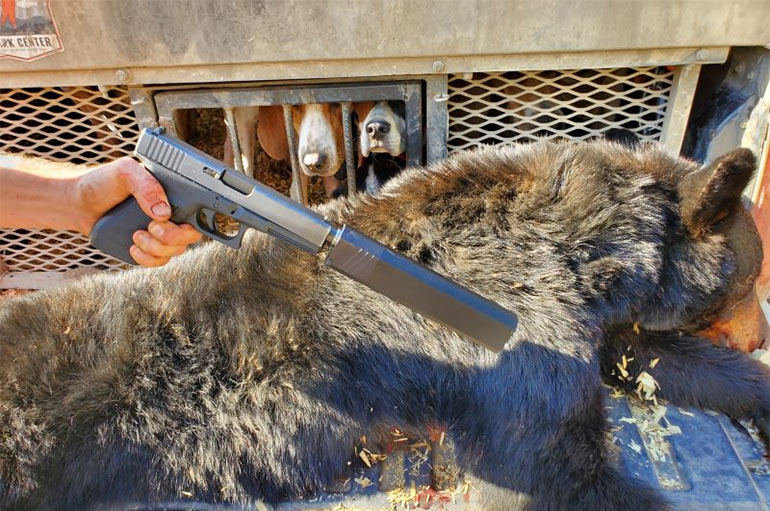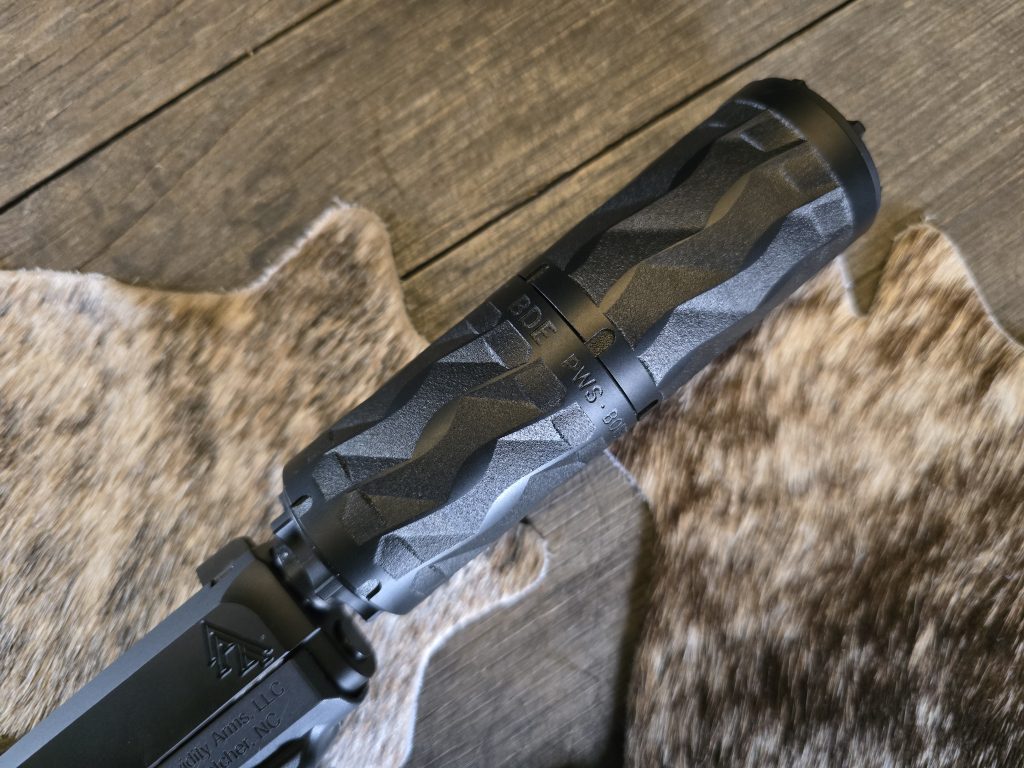
A suppressed pistol shooting subsonic ammunition gets pretty darn close to “Hollywood quiet” and is undeniably cool. Better yet, moving your hearing protection from on your head to on your gun is more comfortable and allows you to hear your surroundings and your friends on the range, making for a safer, more enjoyable experience.
If you own a pistol, there’s a good chance you own a GLOCK. As the most popular semi-automatic handgun ever made, we’ve focused this how-to on suppressing a GLOCK. However, the same steps and general components also apply to the majority of other semi-automatic, centerfire pistols.
Required Components:
- Threaded barrel
- You’ll need a barrel with a threaded muzzle in order to attach your silencer. Make sure to get one from a reputable manufacturer designed for your specific model and generation of GLOCK (e.g. Gen 3 GLOCK 19)
- Pistol booster
- If your suppressor weighs over approximately 4.5 ounces, a pistol booster (AKA Nielsen Device) will be necessary for proper operation
- Most pistol silencers come with a booster, though for some models it’s an optional accessory.
- Some come with a booster housing/assembly, but not a piston, which is the part that actually threads onto your barrel.
- Determine what component(s) are required for your silencer model, and make sure to match the thread pitch of your booster piston to the thread pitch of your barrel (e.g. most 9mm barrels will be threaded with a 1/2×28 thread pitch, so you’ll need a 1/2×28 piston to mount your silencer to that barrel).
- Suppressor
- A pistol suppressor for your pistol! Silencer Shop carries all of the top models.
- Make sure to select a silencer that’s rated for the caliber(s) of the pistol(s) you intend to use it on. In most cases, the caliber rating on the silencer represents the largest caliber it’s rated for, meaning anything smaller can also be shot through it but nothing larger can (e.g. a .45 cal suppressor can be used on .45, .40, 9mm, etc., but a 9mm suppressor cannot be used on anything larger in diameter than 9mm).
Optional Components:
- Suppressor-height sights or a red dot
- Taller sights can make it easier to maintain a normal sight picture even with a suppressor mounted
- Subsonic ammunition
- While your suppressed pistol will run with any standard ammo, it’ll be a lot quieter with subsonic rounds. Keeping things below the speed of sound means no sonic boom; the bullet doesn’t break the sound barrier so it won’t make a loud “crack.”
- Some calibers, like .45 ACP, are subsonic as standard. Some, like 9mm, are subsonic with heavier bullet weights such as those over approximately 140 grains but are supersonic with lighter bullets.
Suppressing Your GLOCK:
- Following all safety rules, field strip your GLOCK per the process described in the owner’s manual.
- Lightly lube your new, threaded barrel and install it in place of your factory barrel.
- Reassemble the pistol and check for function by racking the slide, ensuring the barrel unlocks from battery and locks into battery correctly.
- Screw your suppressor, with pistol booster assembly installed, onto your threaded barrel.
- Be careful when screwing it on to ensure correct thread alignment. Don’t force it, don’t cross-thread it.
- Make it good and snug. After firing a magazine of ammo, it’s a good idea to check again to ensure the suppressor is tight on the barrel (careful, it may be hot).
- Have fun! Start slow, make sure everything’s working as-intended and isn’t coming loose. Follow your silencer manufacturer’s guidelines for lubrication, cleaning, maximum rate of fire, etc.
Pew pew! Enjoy the fun and the enhanced hearing safety of shooting suppressed.



